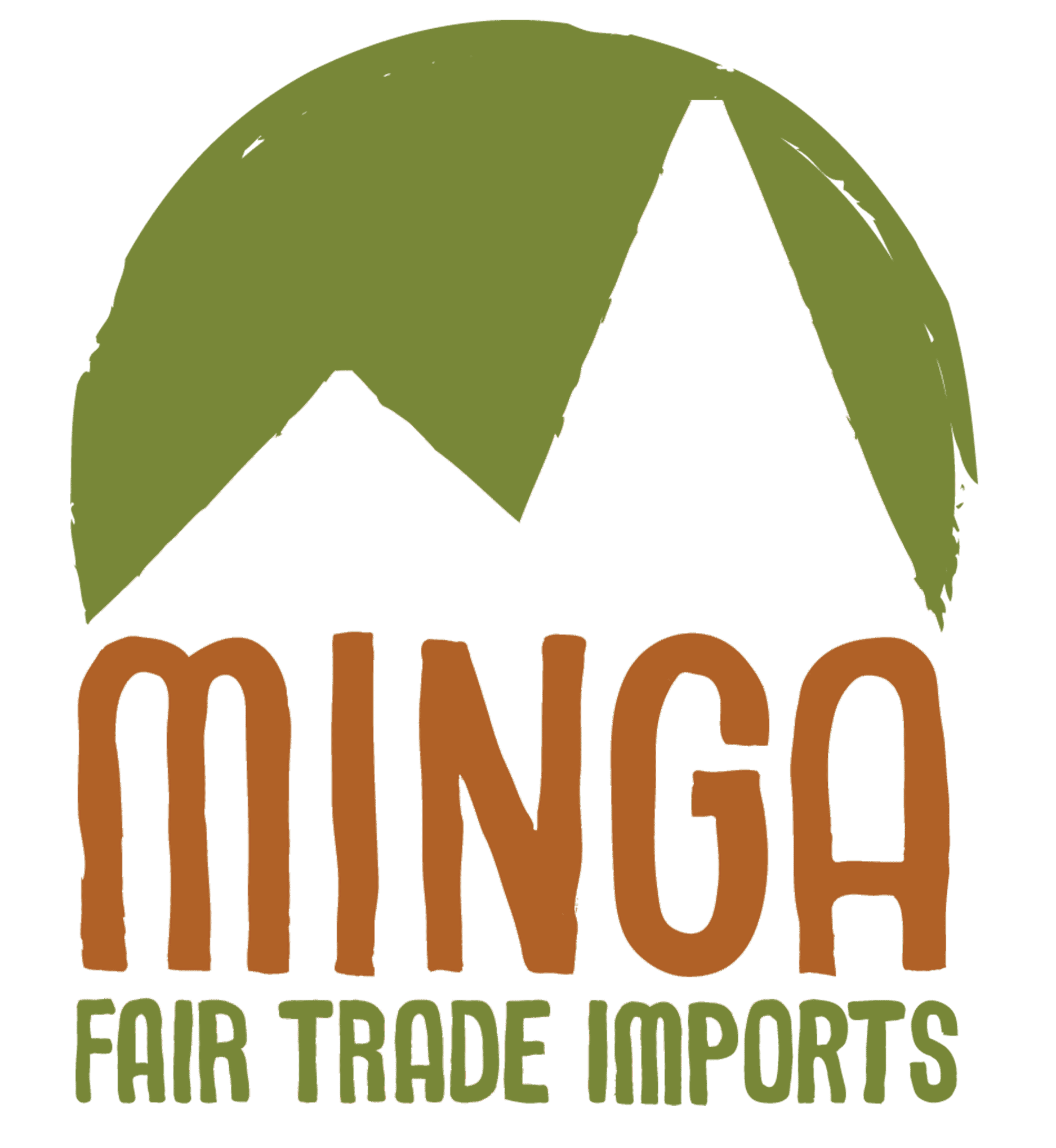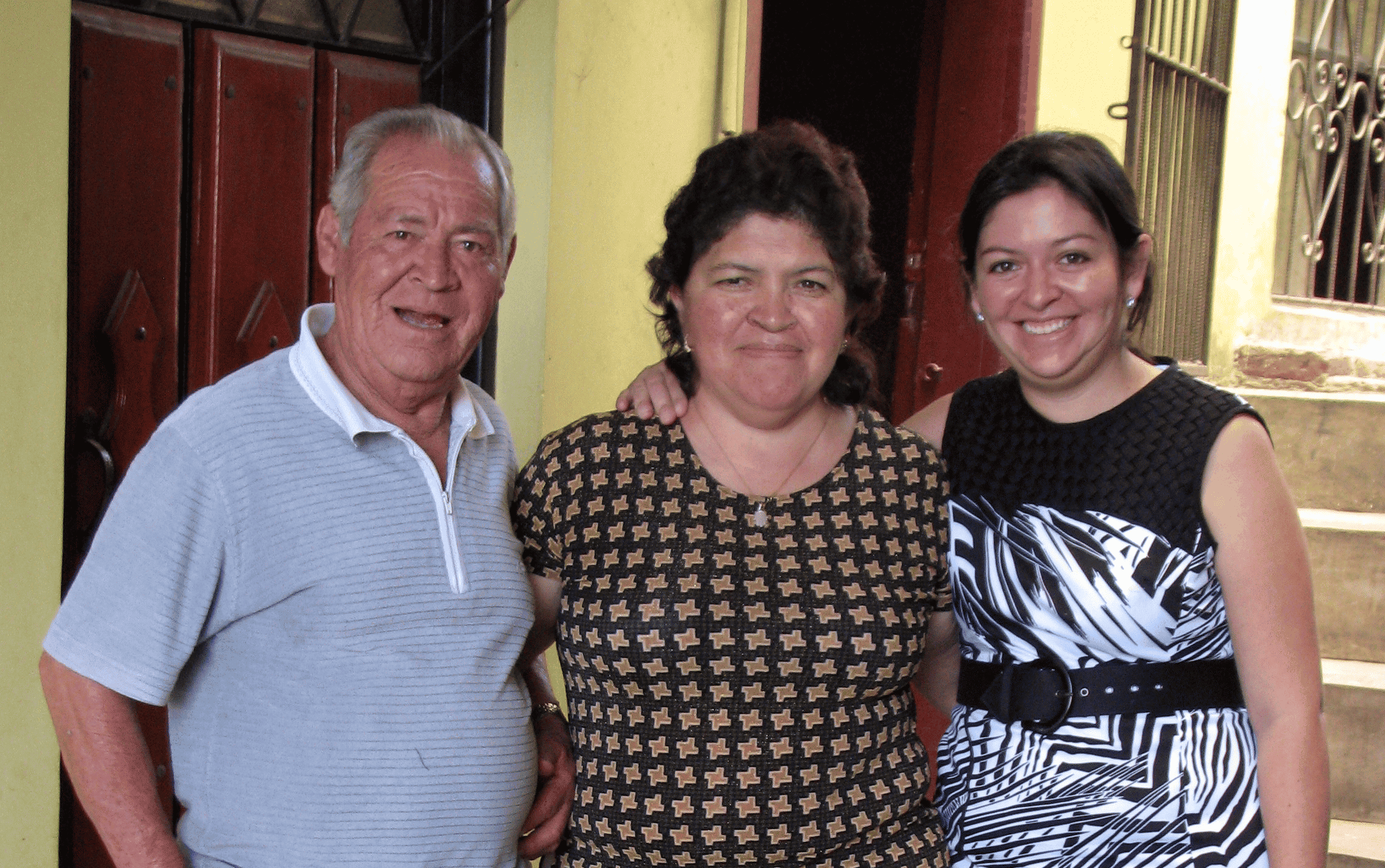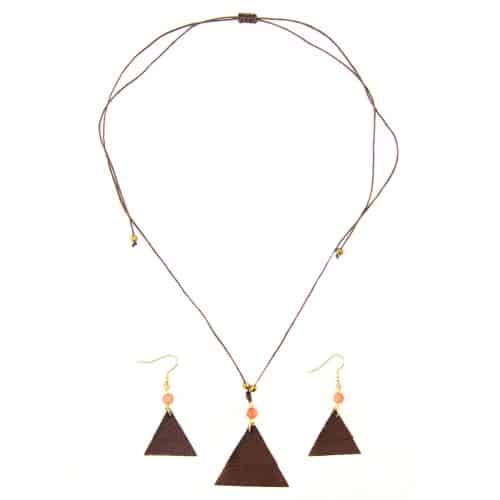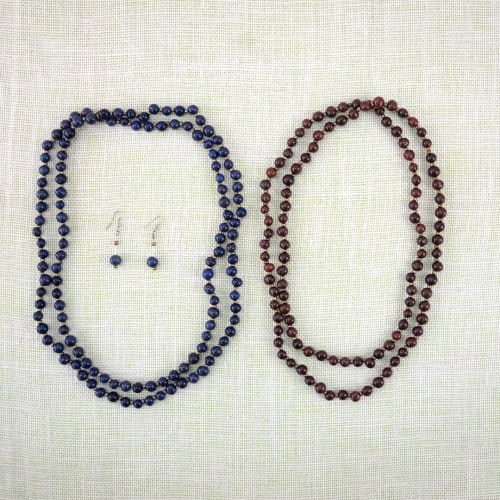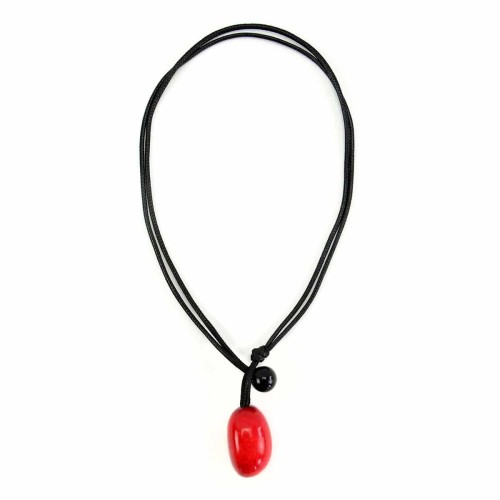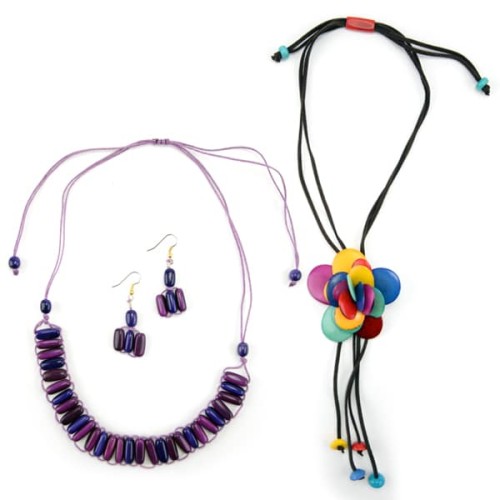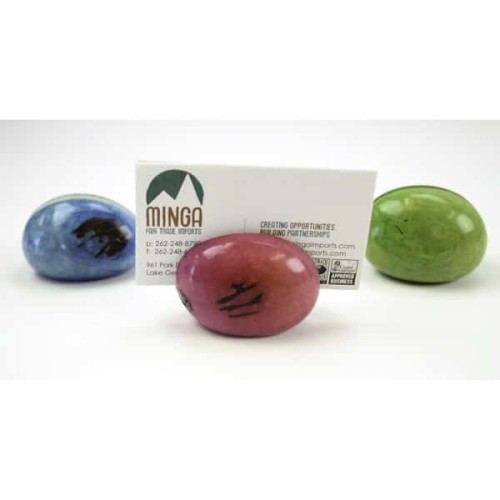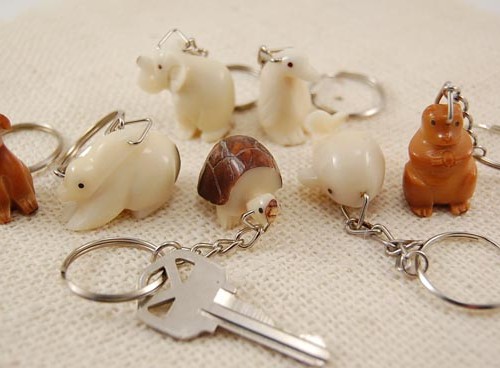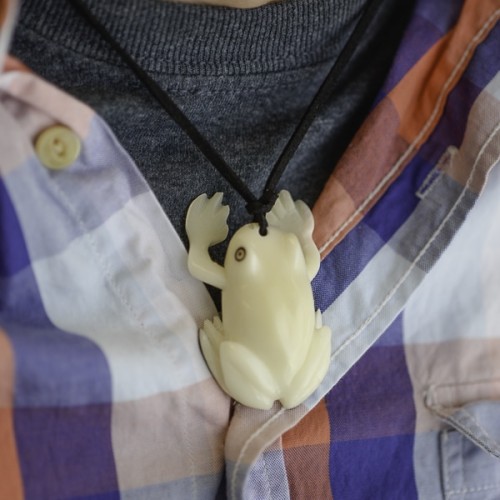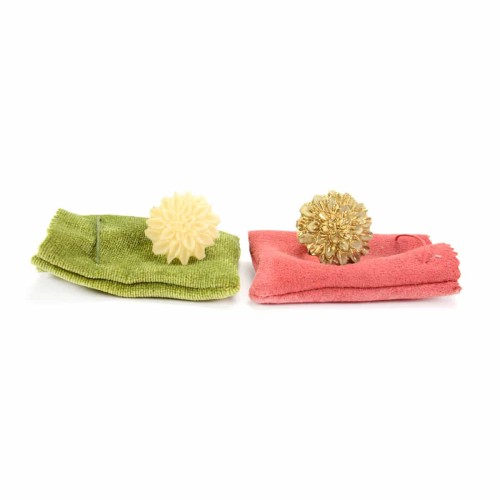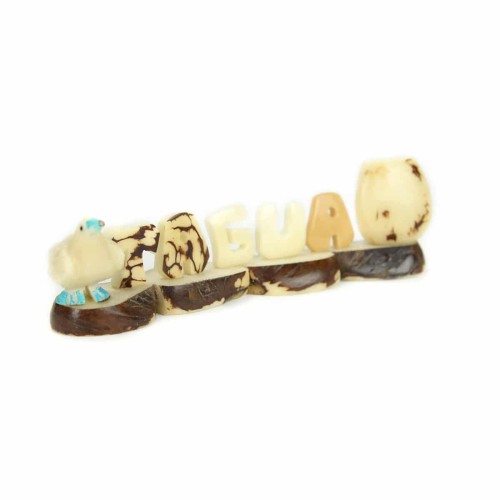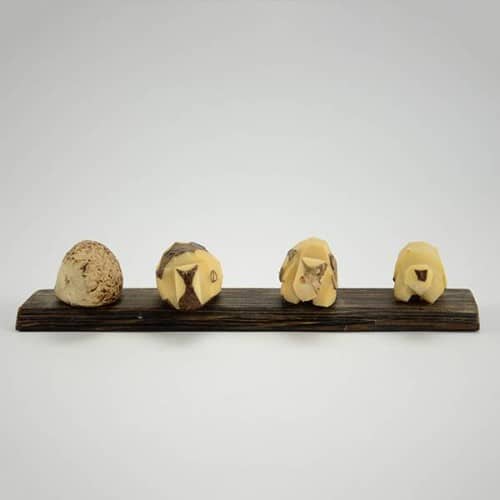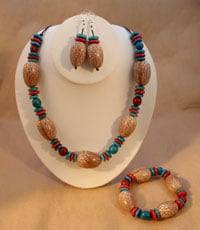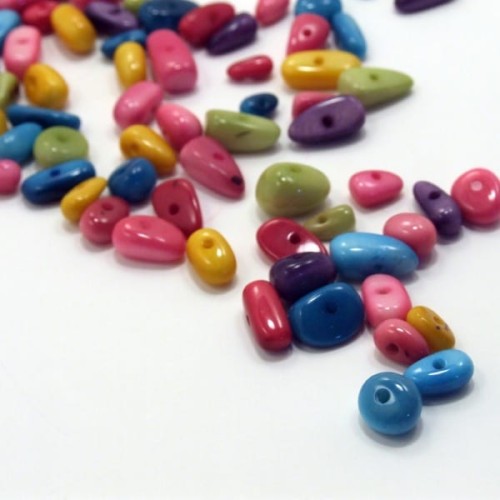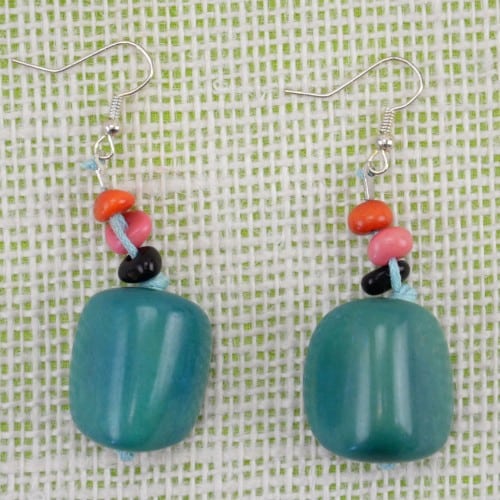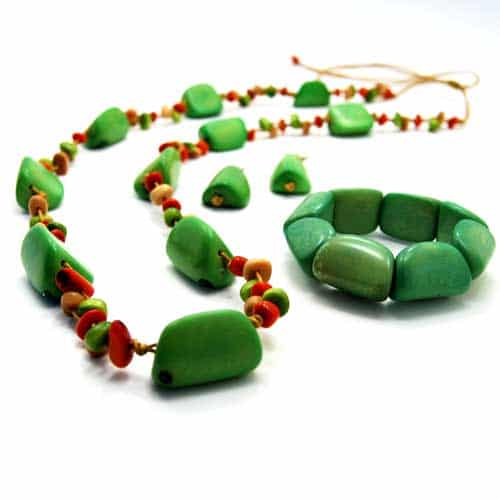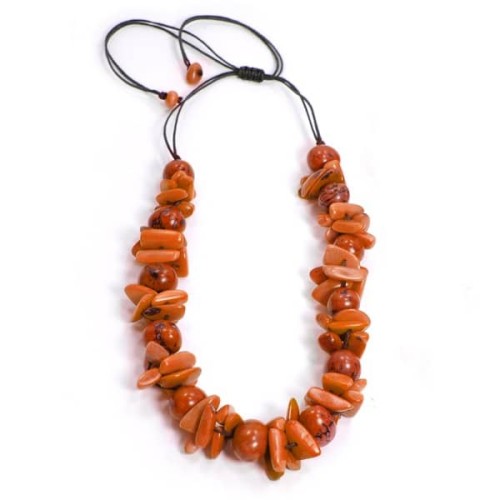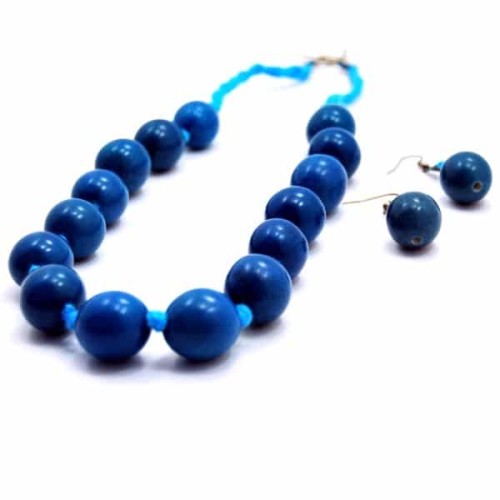Martha was born in Ambato. She now lives with her husband, Jorge, and two daughters, Anita and Aleja, in a beautiful house designed by herself a little north of Otavalo. She says, “ I design sweaters, I design houses, I design my family – all of it!”
Martha has a heart full of compassion for animals. Up the hill from her home she has about eight dogs in a very large enclosed area. She has about a dozen more in another pen farther up the hill. They have plenty of room to run outdoors and play. She has collected so many dogs because she finds them in pitiful conditions on the streets and can’t bear to leave them that way – so she brings them home and cares for them.
Martha is also very diligent and proud of her artisan work. She makes sure her workers check the quality carefully when details are being added, such as zippers, buttons, lining, and labels. The sweaters themselves are knitted in the homes of dozens of women both nearby and far out in the countryside.
When asked about how her business started she says she is glad to tell the story, not for herself, but for the women who knit the sweaters. She began it in 1985 in October with three knitters when her husband Jorge retired from the police force (at age 43). She related that neighbors would come to her door and knock, begging for work. She couldn’t stand to turn them away, as their needs were so great. She has friends in Chile, Canada, Germany, Belgium, Spain, the U.S., and even some in Japan who buy the sweaters she designs and she asked the neighbor women to make them as well. Thirty years later, she has knitters all over the country, but mostly in the northern Ecuador. They call her mother sometimes, because she tries to take care of all of them and give them a share in the orders.
Her primary business is to design the sweaters, buy the raw materials, organize the women in the various sectors into groups, and get the orders and distribute them and the raw materials to each group. Each group has a leader whom she has personally trained to make the various designs and taught how to supervise the other women. She is most interested in giving work to women who have great economic needs – it is the purpose of her business, she says. Many single mothers work for her, for example. She has wanted to retire many times, but when people come knocking on her door looking for work, she always wants to help. Laughingly she says maybe she’ll retire some day – and maybe not. Her daughter Anita says Martha is “terca,” which means “obstinate” or “stubborn.” Martha laughs and says, “It’s true.” She says it’s hard for her to rest at night thinking of all the women she knows who need work. She sleeps 7-8 hours a night, though, and that should be enough. Daytime is for work, she says. She occasionally goes away for a weekend for a vacation with her family, and Sunday is always for resting.
She has a list of about 1,500 knitters she has worked with over the past 30 years, and keeps a logbook with all their contact information. If she gets a large order, she distributes it among as many women as is practical. Each woman can knit about three or four sweaters per week, thus she engages as many women as can complete the order in the time expected. Her biggest concern is getting work to as many women as possible, so if there is only a small order, she distributes it to a larger number of women than necessary so they can at least get some income rather than nothing. Her logbook contains all the orders, dates, how much material was given each artisan, how much brought back, quality control issues – everything pertinent to that artisan.
Martha’s oldest daughter, Anita, has been helping the business since she was a child. When she was eleven, her father had a car accident and wasn’t able to help as much. Anita eventually helped out by driving a second car around, with her mother driving the first one, to visit the homes of the knitters. She also was the model for the designs for many years. Currently Anita, who has an engineering degree, is in charge of interfacing with all the international customers, especially via Internet. Her English is quite good – she had three years of it in university. She says she’s forgotten a lot because she doesn’t use English every day. She has a small son and Martha shares the joy of grandchildren. Martha’s second daughter, Alejandra, has worked with her since childhood also.
Every year, Martha creates ten to fifteen new styles. She is always modifying these styles, as there is a lack of copyright protection in Ecuador and the challenge of having original designs pushes her to come up with fresh styles constantly. There is no law protecting the rights of a designer for the styles she creates, so they continuously face the reality of piracy. Their very first design was a cowled sweater available in five colors. Their current best-seller is also a cowled sweater, available in gray, navy, and white.
Martha would like customers to know that the work is very hard, and to please keep buying, because they need to keep the women working and making high quality fair trade goods. There are many single moms feeding their families with this income. To Martha and Anita, it doesn’t matter the size of the order, only that the client keeps ordering. She reiterates that she keeps working because the work is supporting so many people who need it.
Even with all the struggles, she relates that she has taught her daughters always to keep moving forward, never looking back or to the side. “Siempre adelante,” is her watchword, and it has resulted in a lot of benefits for hundreds of Ecuadorean women who used to live in poverty.
Minga 2015
Showing 1301–1320 of 1577 results
Showing 1301–1320 of 1577 results
